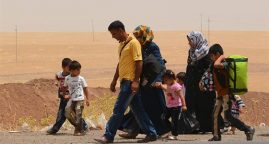The Atlas of Environmental Migration
May 2017 by Dina Ionesco, Daria Mokhnacheva, François Gemenne
As climate change and extreme weather events increasingly threaten traditional landscapes and livelihoods of entire communities the need to study its impact on human migration and population displacement has never been greater.
The Atlas of Environmental Migration is the first illustrated publication mapping this complex phenomenon. It clarifies terminology and concepts, draws a typology of migration related to environment and climate change, describes the multiple factors at play, explains the challenges, and highlights the opportunities related to this phenomenon.
Through elaborate maps, diagrams, illustrations, case studies from all over the world based on the most updated international research findings, the Atlas guides the reader from the roots of environmental migration through to governance.
In addition to the primary audience of students and scholars of environment studies, climate change, geography and migration it will also be of interest to researchers and students in politics, economics and international relations departments.
Related Articles
Memo to Congress: Don’t Cut Foreign Aid
06/15/2017. US spend less than 1 percent of the federal budget on foreign assistance.
A record number of internally displaced
05/11/2007. Conflict, violence and disasters internally displaced 27.8 million people in 2015, subjecting a record number of men, women and children to the trauma and upheaval of being forcibly displaced within their own country.
An Interview with Professor Michel Veuthey
06/09/2020. Human trafficking, as a contemporary form of slavery, is a collection of massive – and often ignored – violations of fundamental human rights.



